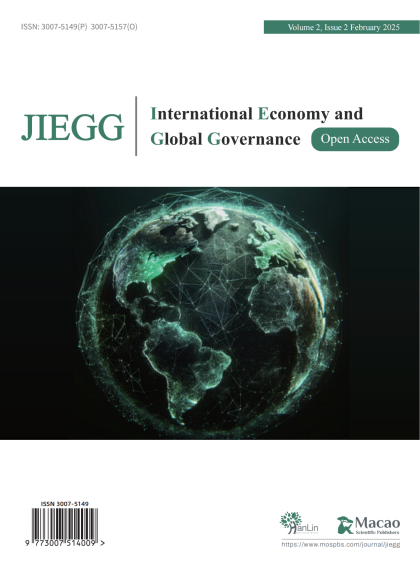-
Anderson, A., & Ayres, A. (2015). Disaster relief: China and India come together. Council on Foreign Relations.
-
Ashraf, M. A., & Azad, M. A. K. (2015). Gender issues in disaster: Understanding the relationships of vulnerability, preparedness, and capacity. Environment and Ecology Research, 3(5), 136–142. https://doi.org/10.13189/eer.2015.030501
-
Asian-Pacific Resource & Research Centre for Women (ARROW). (2017). Women’s health and climate change.
-
Bajracharya, A., Shrestha, K. K., Zwi, A. B., & Baldry, E. (2022). Reframing gendered disaster: Lessons from Nepal’s indigenous women. International Journal of Disaster Risk Reduction, 83, 103422. https://doi.org/10.1016/j.ijdrr.2022.103422
-
Aon Benfield. (2015). Nepal earthquake event recap report.
-
Blaikie, P., Cannon, T., Davis, I., & Wisner, B. (2014). At risk: Natural hazards, people’s vulnerability, and disasters (2nd ed.). Routledge.
-
Bureau for Crisis Prevention and Recovery. (2020). Gender and disasters. United Nations Development Programme (UNDP).
-
Byrne, B., & Baden, S. (1995). Gender, emergencies and humanitarian assistance (No. 33). Institute of Development Studies.
-
Campbell, M. M. (2005). Tsunami and the silent tide: the invisible challenge of women's health. J Fam Plann Reprod Health Care, 31(2), 95-97.
-
Cannon, T. (1994). Vulnerability analysis and the explanation of 'natural' disasters. Disasters, Development and Environment, 1, 13–30. https://doi.org/10.1111/j.1467-7717.1994.tb00485.x
-
Cannon, T. (2002). Gender and climate hazards in Bangladesh. Gender & Development, 10(2), 45–55. https://doi.org/10.1080/13552070215894
-
Carballo, M., Hernandez, M., Schneider, K., & Welle, E. (2005). Impact of the tsunami on reproductive health. Journal of the Royal Society of Medicine, 98, 400–403.
-
CARE International. (2021). The 10 most under-reported humanitarian crises of 2020.
-
Chandran, R. (2016, August 10). Nepal quake impact on single women underlines need for equal land rights: Activist. Reuters.
-
Ciampi, M. C., Gell, F., Lasap, L., & Turvill, E. (2011). Gender and disaster risk reduction: A training pack. Oxfam GB.
-
Dasgupta, S., Şiriner, İ., & De, P. S. (Eds.). (2010). Women’s encounter with disaster. Ismail Siriner.
-
Dhungel, R., & Ojha, R. N. (2012). Women’s empowerment for disaster risk reduction and emergency response in Nepal. Gender & Development, 20(2), 309–321.
-
Djalante, R., Holley, C., & Thomalla, F. (2011). Adaptive governance and managing resilience to natural hazards. International Journal of Disaster Risk Science, 2, 1–14.
-
Embassy of Nepal. (2024). Empowering Nepalese women in politics and diplomacy; Interaction program at Nepal House.
-
Enarson, E., Fothergill, A., & Peek, L. (2018). Gender and disaster: Foundations and new directions for research and practice. In H. Rodríguez, W. Donner, & J. E. Trainor (Eds.), Handbook of disaster research (pp. 205–223). Springer.
-
Enarson, E., & Morrow, B. H. (1998). Why gender? Why women? An introduction to women and disaster. In E. Enarson & B. H. Morrow (Eds.), The gendered terrain of disaster: Through women’s eyes (pp. 1–8). Praeger.
-
Enarson, E., & Chakrabarti, P. G. D. (Eds.). (2009). Women, gender and disaster: Global issues and initiatives. SAGE Publications India.
-
Enarson, E. P. (2012). Women confronting natural disaster: From vulnerability to resilience. Lynne Rienner Publishers.
-
Erman, A., De Vries Robbe, S. A., Thies, S. F., Kabir, K., & Maruo, M. (2021). Gender dimensions of disaster risk and resilience: Existing evidence. World Bank.
-
Fatouros, S., & Capetola, T. (2021). Examining gendered expectations on women’s vulnerability to natural hazards in low to middle income countries: A critical literature review. International Journal of Disaster Risk Reduction, 64, 102495.
-
Fordham, M. (2013). Gendering vulnerability analysis: Towards a more nuanced approach. In Mapping vulnerability (pp. 174–182). Routledge.
-
Fordham, M. (1999). The intersection of gender and social class in disaster: Balancing resilience and vulnerability. International Journal of Mass Emergencies & Disasters, 17(1), 15–36.
-
Saito, F. (2012). Women and the 2011 East Japan disaster. Gender & Development, 20(2), 265–279.
-
Global Fund for Women. (2016). One year later: Women rebuilding Nepal.
-
Government of Nepal. (2020). Nepal human development report. Nepal Planning Commission.
-
Government of Nepal, National Planning Commission. (2015). Nepal Earthquake 2015 post disaster needs assessment (p. 56). Kathmandu.
-
Hallegatte, S., & Henriet, F. (2009). Assessing the consequences of natural disasters on production networks: A disaggregated approach.
-
International Labour Organization (ILO). (2002). Crisis, women and other gender concerns: Selected issues papers. Recovery and Reconstruction Department, ILO.
-
Karki, K., & Listyarini, A. (2023). Women’s right to land is the foundation for a better tomorrow. Equal Times.
-
K.C., L., & Hilhorst, D. (2022). Gendered experience of disaster: Women’s account of evacuation, relief, and recovery in Nepal. International Journal of Disaster Risk Reduction, 72, 102840.
-
Kondowe, U. (2023). Gender-blind disaster preparedness and response: The case of Cyclone Freddy in Malawi. For Equality Africa.
-
Laplante, D. P., Brunet, A., Schmitz, N., Ciampi, A., & King, S. (2008). Project Ice Storm: Prenatal maternal stress affects cognitive and linguistic functioning in 5½-year-old children. Journal of the American Academy of Child & Adolescent Psychiatry, 47(9), 1063-1072.
-
Maharjan, K. (2013). Simulating policy alternatives for dropouts and girls' scholarship program in community primary schools: The case of Nepal. Unpublished manuscript.
-
Mehta, M. (2007). Gender matters: Lessons for disaster risk reduction in South Asia. The International Centre for Integrated Mountain Development (ICIMOD).
-
Mian, L. H., & Namasivayam, M. (2017). Sex, rights, and gender in the age of climate change. Asian-Pacific Resource & Research Centre for Women (ARROW), 58.
-
Ministry of Education, United Nations Children’s Fund (UNICEF), & United Nations Educational, Scientific and Cultural Organization (UNESCO). (2016). Global Initiative on Out of School Children – Nepal Country Study.
-
Muttarak, R., & Pothisiri, W. (2013). The role of education on disaster preparedness: Case study of the 2012 Indian Ocean earthquakes on Thailand’s Andaman Coast. Ecology and Society, 18(4).
-
Neumayer, E., & Plümper, T. (2007). The gendered nature of natural disasters: The impact of catastrophic events on the gender gap in life expectancy, 1981–2002. Annals of the Association of American Geographers, 97(3), 551–556.
-
Norris, F. H., Friedman, M. J., Watson, P. J., Byrne, C. M., Diaz, E., & Kaniasty, K. (2002). 60,000 disaster victims speak: Part I. An empirical review of the empirical literature, 1981—2001. Psychiatry, 65(3), 207-239.
-
Ovesen, P., & Heiselberg, S. (2016). The humanitarian response to the 2015 Nepal earthquake. Humanitarian Action: A Shared Responsibility, 53(1).
-
Oxfam. (2016). I am alone: Single women and the Nepal earthquake. OCHA Services.
-
Oxfam International. (2005). The tsunami’s impact on women.
-
Pattisson, P. (2018). Nepal’s female masons dig deep to lay foundations for change and renewal. The Guardian.
-
Perera-Mubarak, K. N. (2013). Positive responses, uneven experiences: Intersections of gender, ethnicity, and location in post-tsunami Sri Lanka. Gender, Place & Culture, 20(5), 664–685.
-
Perry, R. W. (2018). Defining disaster: An evolving concept. In H. Rodríguez, W. Donner, & J. E. Trainor (Eds.), Handbook of disaster research (pp. 3–22). Springer.
-
Putnam, R. D. (2000). Bowling alone: America’s declining social capital. In Culture and politics: A reader (pp. 223–234). Routledge. (Original work published in Journal of Democracy, 6(1), 1995)
-
Saito, F. (2012). Women and the 2011 East Japan disaster. Gender & Development, 20(2), 265–279.
-
Shakya, S., Basnet, S., & Paudel, J. (2022). Natural disasters and labor migration: Evidence from Nepal’s earthquake. World Development, 151, 105748.
-
Tearne, J. E., Guragain, B., Ghimire, L., Leaning, J., & Newnham, E. A. (2021). The health and security of women and girls following disaster: A qualitative investigation in post-earthquake Nepal. International Journal of Disaster Risk Reduction, 66, 102622.
-
Thapa, P. B. (2018). Analysis of landslides triggered by the 2015 Gorkha earthquake, Nepal. In Living under the threat of earthquakes: Short and long-term management of earthquake risks and damage prevention in Nepal (pp. 45–63). Springer International Publishing.
-
Thapa, R. B. (2017). Kathmandu metropolitan area. In Urban development in Asia and Africa: Geospatial analysis of metropolises (pp. 217–237). Springer Singapore.
-
The World Bank. (2021). Gender dynamics of disaster risk and resilience.
-
Tiwari, M. (2024). Land ownership and nutrition in Nepal. Review of Development Economics.
-
UN-Habitat. (n.d.). Nepal. https://unhabitat.org/nepal
-
United Nations Development Programme. (2013). Gender and disaster risk reduction. Retrieved May 2, 2020, from https://www.undp.org/content/undp/en/home/librarypage/environment-and-climate/gender-and-disaster-risk-reduction.html
-
United Nations. (2011). Fact sheet: Women, gender equality and climate change. The UN Internal Gateway on Gender Equality and Empowerment of Women.
-
United Nations Human Development Reports (UNDP). (n.d.). Gender inequality index (GII).
-
UN News. (2015). UN allocates $15 million in emergency funds for Nepal earthquake response.
-
UN Women. (2016). Nepal: A year after the earthquakes.
-
UN Women. (2015). Reaching out to survivors of violence in post-earthquake Nepal.
-
UN Women. (2019). The aftermath of an earthquake in Nepal.
-
U.S. Geological Survey (USGS). (n.d.). M 7.8 - 67 km NNE of Bharatpur, Nepal. USGS Earthquake Hazards Program.
-
Vesga-Lopez, O., Blanco, C., Keyes, K., Olfson, M., Grant, B. F., & Hasin, D. S. (2008). Psychiatric disorders in pregnant and postpartum women in the United States. Archives of general psychiatry, 65(7), 805-815.
-
Women’s Environment and Development Organization (WEDO). (2007). Changing the climate: Why women’s perspectives matter (Fact Sheet).

